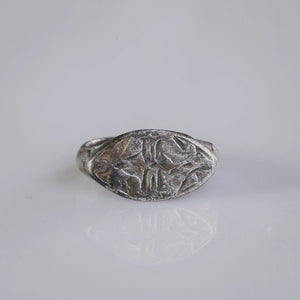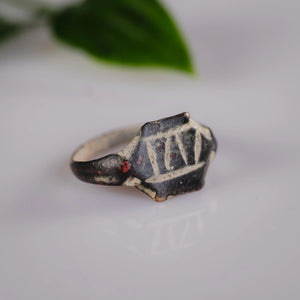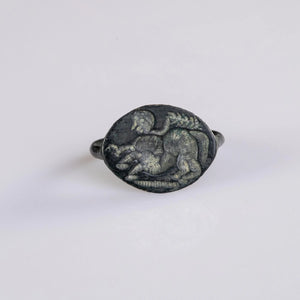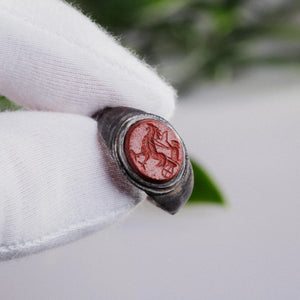Interesting facts
What Is Traditional Greek Jewelry? A Journey Through History, Symbolism, and Craftsmanship
When you think of traditional Greek jewelry, what images flicker in your mind? Perhaps delicate gold necklaces that once graced the necks of ancient nobles, or rings intricately etched with symbols whispered about in myths of gods and heroes. Traditional Greek jewelry is far more than simple adornment. It’s a gateway into the rich fabric of Greek history, culture, and spirituality—a tangible link to the myths, beliefs, and exquisite artistry that shaped an entire civilization.
To truly appreciate traditional Greek jewelry is to step into a world where every piece holds meaning, every pattern echoes stories from long ago, and every material was chosen with deep care and intention. Among these treasures, ancient Greek rings stand out. Their intricate beauty and profound symbolism speak across millennia, connecting us to artisans who saw jewelry not just as decoration, but as a reflection of identity, faith, and artistry. But what exactly defines Greek jewelry? What secrets lie hidden in those etched surfaces? And how does this ancient craft continue to shape modern design?
Let’s take a journey through the history, symbolism, and craftsmanship of Greek jewelry — with a special focus on rings, the iconic symbols of this tradition — to uncover their fascinating role in culture, and how they remain alive in today’s style.
The Roots of Traditional Greek Jewelry: A Historical Overview
Traditional Greek jewelry stretches back thousands of years, its story woven through the Bronze Age and flourishing during both the Classical and Hellenistic periods. Greek artisans stood among the world’s finest, skillfully blending naturalistic depictions with symbolic motifs that reveal much about their outlook on life and the divine.
The evolution of Greek jewelry is deeply intertwined with the political, philosophical, and artistic achievements of the city-states, and the enduring impact of mythology that still captivates us today. Fundamental materials—gold, silver, and bronze—were fashioned into delicate chains, earrings, bracelets, and especially rings, each with its unique significance.
Rings in particular carried weight beyond mere decoration in ancient Greece. They were badges of identity, expressions of faith, and sometimes talismans believed to protect the wearer from harm. Many of these rings featured intaglios—intricate carvings engraved on precious stones or gems—depicting mythological creatures like the manticore, gods such as Athena or Artemis, or symbols drawn from nature. These images were far more than ornamental flourishes; they signified social rank, religious devotion, and personal virtues, making each ring a small storytelling device.

Imagine, for a moment, a noblewoman in Athens centuries ago slipping onto her finger a finely crafted gold ring, the gem engraved with the visage of Athena—the goddess of wisdom and warfare. Such a piece would proclaim not only her wealth and status but also her values and hopes. These rings were, in essence, intimate relics of identity and belief, worn every day to reflect who the person was or aspired to be.
Materials and Craftsmanship: The Language of Form
Gold, in the ancient Greek imagination, was more than a precious metal. Its radiant glow and resistance to corrosion made it a symbol of purity, power, and even immortality. Silver, shone brightly and was accessible enough to adorn a variety of pieces, while bronze found its way into more practical or utilitarian objects, sometimes enhanced with thin layers of gold called gilding to create a striking contrast.
The techniques Greek goldsmiths mastered highlight a level of precision and artistry that still amazes today. Lost-wax casting enabled them to create detailed, three-dimensional forms, while delicate filigree—thin wires intricately twisted and woven—gave jewelry a lacy, ethereal quality. Granulation, the art of affixing tiny gold beads to a surface, added texture and depth, making designs come alive with subtle detail. Engraving allowed them to capture fine lines, bringing mythological figures and symbols into sharp relief on gems and metal alike.
Consider again a Classical-era ring with an Athena intaglio: the miniature carving—a feat of fine artistry—was not simply beautiful but served as a personal emblem, a miniature talisman expressing intelligence and courage. The craftsmanship was not static; as Hellenistic culture expanded and mingled with others, like Egyptian and Persian societies, Greek jewelry absorbed new motifs and styles, creating works that were at once familiar and innovative.
Symbolism in Ancient Greek Rings: Stories Worn on the Hand
Why did the ancient Greeks invest such rich symbolism into rings and jewelry? The answer lies partly in their deeply spiritual world and partly in their complex social structures.
Jewelry acted as spiritual armor. Mythical beasts, like the manticore—a fierce creature with a human face, lion’s body, and scorpion’s tail—were engraved onto rings to imbue the wearer with strength and to ward off evil spirits. Gods and goddesses bore a special place: wearing their images was like carrying a personal protector wherever one went. Athena represented wisdom and strategy; Artemis symbolized the hunt and protection of the young. These images served as constant reminders of the virtues one wished to embody or the divine favor one sought.
Greek jewelry also echoed the natural world, a theme woven deeply into their religious beliefs. Olive branches, waves, leaves, and floral designs frequently adorned rings, forming connections to nature’s cycles of life and renewal. Perhaps wearing a ring cut with olive branches was a prayer for peace and victory, since the olive tree was sacred to Athena and a symbol of prosperity in Athens.
Social status, too, was declared through jewelry. A finely crafted gold ring signified wealth, noble birth, or professional achievement. Marriage rings were used as tokens of affection and contractual promises. Some rings acted as seals, bearing a family crest or emblem, linking the wearer to lineage and heritage, and authenticating documents with an engraved impression.
This social and spiritual language of rings created a rich tapestry of meaning, turning everyday objects into profound carriers of identity and belief.
Do modern jewelers still use ancient Greek techniques in crafting jewelry today?
Yes, modern jewelers often incorporate ancient Greek techniques such as granulation, where tiny beads of gold are used to create intricate patterns, and cloisonné, an ancient enameling technique. These traditional methods are celebrated for their meticulous craftsmanship and ability to convey rich stories and heritage through jewelry pieces. This not only preserves an important aspect of Greek culture but also introduces a historical depth to contemporary jewelry design, resonating with those who appreciate the fusion of old and new.
Transition and Influence: From Ancient Greece to Rome and Beyond
The story of Greek jewelry did not end with the decline of the Greek city-states. Instead, it transformed. As Rome rose to power, it absorbed Greek culture like a sponge, blending tradition with new tastes.
Roman rings borrowed Greek motifs—the gods, creatures, patterns — but adapted them to suit Roman sensibilities. The effect was a cultural fusion, spreading Greek symbolism far beyond the Mediterranean basin. This exchange enriched both art forms, while setting the stage for jewelry styles in later eras.
Even in today’s jewelry studios, echoes of Greek traditions resonate. Modern designers frequently draw from mythological themes, intricate patterns, and ancient techniques. The enduring fascination with these symbols testifies to a timeless desire: to carry stories and identities close to the body, to make jewelry that means more than just decoration.
The Enduring Legacy of Traditional Greek Jewelry
What captivates us about traditional Greek jewelry is its multilayered nature. These pieces are at once works of art, cultural artifacts, and deeply personal objects. Each ring or necklace invites us to enter an ancient world—one teeming with myth, symbolism, and the human need for connection.
In today’s collections inspired by antiquity, like the Dione Ancient Greek Rings, this heritage is alive and visible. Such pieces honor the past, while blending it with contemporary design, offering us a way to wear history—not as a museum piece, but as daily expression.
Explore Our Heritage Collection
Shop NowWhy Does Traditional Greek Jewelry Still Matter?
In an era overwhelmed with cheap, mass-produced accessories, traditional Greek jewelry stands apart as a testament to meticulous craftsmanship and layered meaning. It invites us to pause, to connect with the narratives patiently inscribed into metal and stone.
For those who cherish history and symbolism, wearing or simply understanding such pieces becomes an act of remembrance. It reminds us that human beings have long sought to fuse beauty with purpose—that a ring could hold both a prayer and a statement of prestige.
This ancient mindset pushes us to reflect on how we approach adornment today. Is it mere fashion, destined to fade with trends? Or can our jewelry become anchors—steady talismans reminding us who we are, what we believe, and where we come from?
A Contemporary Reflection: Living Traditions in Modern Contexts
Even in contemporary Greek culture, the legacy of traditional jewelry pulses with life. Far from relics, these motifs and techniques thrive, inspiring new generations of creators and wearers. The ancient stories transform, remaining relevant while layered with modern meaning.
Many artisans today blend ancient craftsmanship with contemporary ideas, creating pieces that honor history and cater to today’s aesthetics. This blend reflects the nature of culture itself—constantly evolving, yet rooted firmly in memory.
Wearing a ring emblazoned with a mythological figure now can serve many purposes: a statement of inner strength, a nod to heritage, or simply an appreciation for artistic beauty that transcends time.
In this way, traditional Greek jewelry acts as a bridge—connecting past and present, sacred and personal, art and daily life.
Take for instance the unique pieces from Aurora Antiqua where elements of ancient greek inscriptions are beautifully echoed in modern wear.
A Personal Note: Why These Stories Matter
If you’ve ever held an ancient Greek ring, or a modern replica fashioned with care, you might have felt the quiet pull of a story beneath its surface. It’s as if those tiny figures, delicately etched lines, speak to something universal—the human longing to give meaning to what we wear.
I recall once cradling a ring engraved with Athena. It felt like holding a sliver of history, a symbol of wisdom passed down through centuries. I found myself wondering about its original wearer: Did they seek courage before battle? Or were they hoping for guidance in a moment of doubt?
These moments of connection link us across time in a profound way. Traditional Greek jewelry is more than art—it’s a vessel carrying human experience, inviting us to explore, understand, and cherish it.
In Conclusion: More Than Just Jewelry
Traditional Greek jewelry—especially those ancient rings etched with gods, creatures, and symbols—reveals the very essence of a civilization. Through their delicate mix of materials, craftsmanship, and rich meaning, these pieces tell tales of identity, belief, and beauty.
Rooted deep in history, their influence endures, reminding us that every ornament carries a story, every adornment a significance beyond the surface. By appreciating traditional Greek jewelry, we open ourselves to a narrative where history, culture, and personal expression intertwine—offering not only beauty, but depth and connection.
So the next time you see a ring adorned with a mythological figure or a pattern inspired by ancient Greece, pause for a heartbeat. Beyond the gleam and detail lies an invitation: to touch something timeless, to carry forward a story not just told in words, but worn close to the skin.
What materials were commonly used in traditional Greek jewelry?
Traditional Greek jewelry was predominantly crafted from gold, silver, and bronze, with intricate embellishments using precious stones and techniques like filigree and granulation.
How did Greek jewelry influence Roman designs?
Greek jewelry heavily influenced Roman designs, with Romans adapting Greek motifs and craftsmanship to align with their own cultural sensibilities, resulting in a blend of styles that spread throughout the empire.
Where can I buy traditional Greek-inspired jewelry today?
For traditional Greek-inspired jewelry, AuroraAntiqua offers meticulously crafted pieces that honor ancient craftsmanship, such as the 'Chimaron' Greek Bronze Ring available at their online store.




